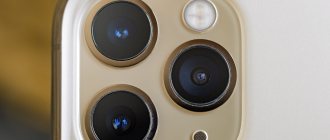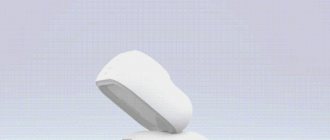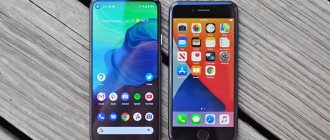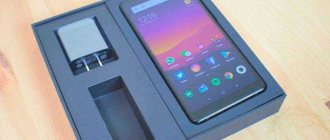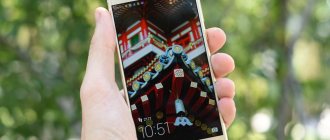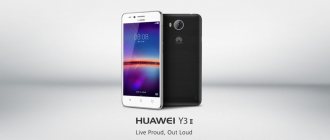Collaboration has long been commonplace in the smartphone world. Some brands release collaborations with others in order to attract the attention of different groups of users to a particular model. For example, by releasing smartphones labeled Porsche Design, Huawei attracted the attention of fans of the popular accessory brand to its exclusive versions. And at the same time, owners of famous Stuttgart cars. The story with the cameras is a little different, but there is a similar component here too. If fans of the Leica brand loved the quality of its cameras, then they can pay attention to smartphones with this marking. Especially if they not only have an appropriate logo, but are also created taking into account the brand philosophy.
This collaboration will remain one of the most exciting in the mobile world.
Leica quality
A desirable camera for photographers in the form of a smartphone, how is this an option? Leica is not only a cool name for hipsters, but also a company with a rich, solid history. Huawei P9 flaunts a dual lens system. 2 12 megapixel sensors work in pairs, but one takes color images, and the other takes black and white. The optics were produced by the Chinese company Sunny Optical Technology under license from Leica itself, everything is serious. The settings menu is reminiscent of the original Leica cameras in a proprietary font, suddenly you had to hold these in your hands.
The smartphone takes excellent pictures on automatic during the day, but you can change the parameters manually, playing with shutter speed, aperture, focus and other settings if you want. The P9's focus is sophisticated: it changes the depth of field, and laser and contrast focusing also work. Games with depth of field have appeared a long time ago, but they are not found in every smartphone.
Is this feature necessary? If you want to feel like a creative person, you should definitely try it, the effects are interesting. [twenty20 img1=»13629" img2=»13628" offset=»0.5"] They also added the RAW format, it is valued by professionals, it allows you to process pictures without loss of quality. I don’t understand why this is needed on the phone and who will subsequently “pulls out” the picture on computers, but if you really want to, then go ahead.
You should definitely try the films, there are only 3 of them, including the standard one. If you use “bright”, the pictures come out more saturated and juicy, the picture is attractive to the eye. They didn’t forget about the built-in additional effects, a kind of simplified Instagram. If you add HDR to the film, then shooting in the evening turns into a game: sometimes the pictures are simply beautiful, sometimes they frighten with unnatural results.
HDR against the sun Orange sunset with HDR Night mode and HDR Simply beautiful Fence stretching into the distance Bright colors, good detail What rich colors Classics of the Huawei genre shot on Huawei
I didn’t like the quality of the pictures in low light; I thought the pictures would be better at night. Apparently, few people can compete with the Galaxy S7 on an equal footing. Although Huawei P9 has as many as 4 profiles for shooting at long exposures at night. But all of them are adapted for a tripod or very strong professional hands, otherwise the frames will be blurry. It’s a pity that they decided to make the body thinner and didn’t add optical stabilization; I think then the P9 would have taken photographs at the same level as the S7, otherwise the difference is too obvious.
Photo of food Saturday morning Excellent macro Stole the bow Beauty Deer! Waka-waka Pompous Old motorcycle Cars Alley Ponds Flowers Even more flowers At sunset And again macro flowers Walking bike Like with an idea
And a few words about the front camera. It is 8 megapixels, traditionally wide-angle and with an effective skin-blurring function. By moving the slider while shooting, we change the strength of this technique so as not to turn into a porcelain dummy.
The smartphone cannot record video in 4K; it records videos in 1920×1080 at a speed of 30 or 60 fps, and additionally shoots timelapses or, conversely, slow-motion videos.
So is the camera on fire or not? It's very good, but it lacks a few things to be perfect. We need faster optics, optical stabilization and faster autofocus. During the day the pictures are very good, but the flagship should take cool photos in any lighting. The Samsung Galaxy S7 proved this to us; it’s really cool. But remember that P9 has his own secret weapon. At night, you can shoot in black and white, focusing on beauty and the plot, thus leveling out the shortcomings. Well, if you use a tripod and ready-made profiles, then the color results will be very good.
Under ideal conditions, the only difference is in detail
On the left is the iPhone 13 Pro, on the right is the Leica Q2. Different levels of processing produce a mobile photo
On the left is the optical 3x zoom of the iPhone 13 Pro, on the right is the digital 3x zoom of Leica Q2
On the left is the iPhone 13 Pro, on the right is the Leica Q2. The second photo had to be turned into RAW to make it look like a mobile one. Also check out the similar shape of the highlight on the left
By 2022, the cameras of top smartphones have expanded the boundaries of what is considered comfortable conditions for shooting them. If previously it was only direct sunlight, now you can add cloudy weather and a bright room.
If you put the pictures side by side and look at them on small screens, the overall level of contrast and illumination is eerily similar. Given these conditions, it may seem that the meaning in large matrices has evaporated.
Everything changes when we enlarge the image at least twice. Look at the detail of the pipes.
On the left is the iPhone 13 Pro, on the right is the Leica Q2. The larger 26mm angle is especially noticeable here
Left iPhone 13 Pro, right Leica Q2
I’m not sure how the Samsung Galaxy S21 with 108 MP would behave, but it’s clear that the iPhone 13 Pro already clearly lacks detail with its 12 MP.
Leica Q2, due to its 19 times larger matrix and its 47.3 MP detail, wins hands down.
For professional use and convenient framing for social networks, footage from a large camera will be more useful.
More or less
Huawei P9 has very small frames, in general it is very small and thin, even thinner than the Galaxy S7. If you need a “small” smartphone with a screen larger than 5 inches, here is an excellent example.
The P9 has an IPS screen, while the P9 Plus has an AMOLED matrix. So the difference between them is not only in diagonals (5.2 versus 5.5 inches). The image on the P9 Plus is more pleasing to the eye, the picture is better tuned, and compared to the “simple” P9, the older model is definitely more interesting. That one’s screen is “Huawei style” set to cool tones, but if you tinker with the palette, you can adjust this parameter.
Huawei is not chasing screen resolution; 1080x1920 pixels may not be the maximum value, but individual pixels are not visible on both smartphones. If this black screen frame on a light background were not striking, the smartphone would seem “frameless”.
Software
Since the imposition of sanctions, Huawei has been promoting its own HarmonyOS 2.0 and related HMS services. However, Huawei P50 Pro runs on EMUI 12. The reason for this division is unclear. Although this does not matter, in any case, it is based on a modified Android with an interface from Huawei and the AppGallery store instead of Google Play. Therefore, you won’t have to get used to it: the interface and functionality are familiar from Android, and the application format is APK.
After the first launch, you can find a huge number of shortcuts on the screen for installing third-party applications. You cannot remove them at once; you need to remove them one by one, which takes a lot of time. It looks like an advertisement, but Huawei wants to show off the AppGallery range in this way. There are really few pre-installed applications: browser, search, Yandex music and keyboard, MS Office and Kaspersky Anti-Virus.
I had experience using a smartphone with HMS and AppGallery. The vast majority of applications are available in the Huawei store, some are installed from APK and work great. However, I still abandoned the smartphone without Google services due to the lack of individual programs and their inoperability after installing the APK. Imagine my surprise when I now found in the store the Premier online cinema, BelkaCar car sharing, and even the Citymobil taxi service. They were the ones who were not working in any form a few months ago. Let's conclude: AppGallery is gradually filling up and there are fewer and fewer gaps.
However, all developers will not be added to the AppGallery; this is a matter of sanctions. Also, many applications cannot work by definition, since they are tied to system layers of Google services. In this case, the company itself recommends using the Gspace virtual machine, which emulates Google and even contains the Play Store. However, the developers behind Gspace are unknown, and the free version of the program contains inconvenient video ads. And even if we do not take this point into account, in such emulation, in any case, not all applications are launched. Therefore, when switching to a smartphone with HMS, I advise you to think in advance about all the alternatives to Google applications: find other notes, cloud storage, photo backup, and everything else.
Also, new versions are not always promptly posted to AppGallery. For example, during testing of the P50 Pro, Navigator from Yandex complained about an outdated version. By pressing a button, Google Play opened in the browser, and AppGallery at that time did not know about the existence of the update.
Huawei has a well-developed ecosystem. Broadcasting the screen to a laptop or tablet, convenient connection to accessories, synchronization with an account and other small features provide convenience to users who have several Huawei gadgets.
Casting the screen of a Huawei smartphone to the MatePad 11 tablet
High quality, but impersonal
The body is made of metal, only a small insert is made of plastic at the top, where the camera lenses are located, and an antenna strip at the bottom of the body. The matte P9 arrived for testing with scratches on the surface, I don’t know what they did to it, but while I was using it for 2 weeks, no other damage appeared on it.
Samsung S7, Huawei P9, Huawei P9 Max, iPhone 6 Plus
The design does not shine with originality, but this is a feature of many Chinese units: you won’t understand whether the phone costs 15 thousand, or 40. Alas, Huawei doesn’t have its own face; we still have to work and work on the corporate design.
Everything is assembled perfectly, the phone weighs little, and is also thin, I liked everything. For statistics: it weighs only 1 gram more than the iPhone 6s, but the screen is much larger.
Appearance
In design, Huawei continues to experiment with the design of the main camera. Now the back cover is decorated with two noticeably protruding circles. In terms of materials, flagships continue to stick to a combination of glass and metal. The P50 Pro can also be praised for its certified IP68 water resistance.
In Russia, the P50 Pro will be presented in two versions - darker and lighter, both with golden accents. Both options are stylish, but the light Cacao Gold is much less easily soiled.
The flat chrome-plated ends at the top and bottom, as well as the arrangement of all elements, can be considered established.
Today it is difficult to find a compact and moderately thin smartphone with rounded edges that really fits well in the hand - our hero is just one of those. The width is 72.8 mm, the thickness does not exceed 8.5 mm, and the weight is 195 grams. Light enough for a glass and metal flagship.
Premium materials have an unexpected downside. An oleophobic coating is applied to the rear glass, which is why the smartphone tends to slide off any slightly uneven surface. Although the device is held very tenaciously in the hands. The problem is solved by the included silicone case, which also protects the protruding lenses of the main camera.
The fingerprint sensor built into the screen is accurate and fast, but the film must be taken into account. The standard one is exactly compatible with the optical scanner; correct operation with third-party protection is not guaranteed. There is also software facial recognition, but the fingerprint sensor works so well that there is no practical point in it.
Convenient software
I like the shell from Sony and Huawei. I don’t consider myself a fan of “pure” Android; everything is too laconic and I want convenience. Huawei has cool wallpapers, well-designed themes, and pleasant melodies. If you draw a specific letter on the locked screen, the phone will launch the application assigned to it.
The one-handed control function works when the interface “shrinks” to a more compact format, and the display also responds to the touch of gloved fingers. And yes, there is Android 6.0, but this is a flagship, you wouldn’t expect anything else in mid-2016.
Discouraging Zoom
But where the Huawei P30 Pro is two, three or maybe even five heads higher than its competitors is in zoom. Optical 5x, hybrid 10x, digital 50x - you can safely use any mode. They are all workers.
Thus, by buying Huawei P30 Pro, you cover all possible scenarios for using a mobile camera. Let's look at examples.
1x 5x
10x 50x
1x 5x 10x 50x
1x
5x
10x 50x
Don't forget about the wide-angle camera either. True, they saved a lot on it, because the quality of photos from a wide angle is incomparably worse. However, on the smartphone screen everything looks decent.
16 mm 27 mm 135 mm 270 mm
16 mm 27 mm - main camera 135 mm
270 mm
1343 mm
By the way, here’s a useful case for using a wide camera – shooting a car interior. I got ready to sell my car, hit the whole salon at once, posted an ad and immediately dumped my junk. Bliss!
16 mm
27 mm
or like this
Are you even aware of what's happening? Now, in 2022, we can go and buy a gadget that fits in our pocket and at the same time easily replaces a computer, and at the same time a camera with a whole fleet of lenses. I just can't wrap my head around it. In my head of 2010. Then I remember buying a Sigma 70-200 lens for the Canon 60D and being happy like a child. There is no need to do any of this now. Without exaggeration, we are all living in magical times!
Senior management
Huawei produces its own processors, the hardware of the P9 is comparable to top-end smartphones from other manufacturers, and compared to the Galaxy S7, the phone looks confident both in tests and in operation. It is fast, I did not notice any glitches or failures with it. I had a P9 version with 3 GB of RAM and 32 GB of internal memory (25 GB available for the user), and a P9 Mac with 4/64 GB. When playing games, the phone does not overheat; the surface of the case becomes warm, but everything is within moderate limits.
Huawei P9
Huawei P9 received a USB type-C connector, I went on a trip and completely forgot about it. I couldn’t find a suitable cable, so I’m sharing my mistake and recommend carrying different types of cables with you.
Camera Specifications
Left iPhone 13 Pro, right Leica Q2
Both Apple and Leica claim that their devices provide the highest level of imaging in their class. But the approaches to work are different.
The iPhone 13 Pro relies on computational photography and algorithms on the powerful A15 Bionic processor, while the Leica Q2 delivers results thanks to a large sensor, a fixed 28mm lens with ƒ/1.7 aperture and high-quality optics.
In short, here's what we compare.
iPhone 13 Pro Main sensor size: 1/1.65 inches or 44 mm2, Resolution: 12 MP Aperture: ƒ/1.5 or equivalent ƒ/6.8 in full frame Angle: 26 mm
Telephoto (3x) sensor size: 1/3.4 inches or 12.2 mm2 Resolution: 12 MP Aperture: ƒ/2.8 or equivalent ƒ/23.8 in full frame Angle: 77 mm
Leica Q2 Sensor size: 1.7 inches or 864 mm2 Resolution: 47.3 MP Aperture: ƒ/1.7 – ƒ/16 Angle: 28 mm Crop up to 75 mm of the same sensor for 3x zoom
This is what digital zoom looks like on the Leica Q2
I did not take into account the ultra-wide-angle camera of the iPhone 13 Pro, since there is no competitor in the Leica Q2, and the quality would be too poor.
According to its characteristics, Leica should destroy its competitor, but the second one is helped by Night mode, Smart HDR 4 and Digital Fusion, which stitches up to 9 photos into one.
The first experience showed that all these digital “enhancers” actually bring the quality closer to full frame. At first sight.
Useful features
The smartphone has a combined tray for nanoSIM and a memory card; it was impossible to install two SIM cards in the test sample, but in general such dual-SIM models exist in nature. The smartphone has fast GPS with accurate navigation, NFC, Bluetooth 4.2 and Wi-Fi ac. LTE is fast, the reception is very good, the P9 has better network reception than the Galaxy S7, which has problems indoors.
The scanner is located at the back, the sensor works sensitively and quickly, there were no errors. The sensor not only locks the phone, but also performs other useful functions: by pressing, we take photos, answer a call, turn off the alarm, or get to the notification menu.
As a connoisseur of streaming music via Spotify, I was pleased with the sound quality, although the volume headroom for the metro is not very large. The speaker is loud, but it lacks low frequencies during a call, but it does not wheeze at maximum.
The P9 has a 3000 mAh battery; by modern standards it charges quickly, in just over an hour. In terms of battery life, the phone is comparable to the Galaxy S7. For me, both of them did not survive until the evening and required recharging in the afternoon.
Display
The Huawei P50 Pro uses a 6.6-inch OLED matrix with a refresh rate of 120 Hz. The sensor layer is polled at a frequency of 300 Hz. On the sides the matrix is strongly bent at the ends. This feature appeared in the Mate 20 Pro and P30 Pro. However, before there were characteristic greenish reflections around the edges; there is nothing like that in the P50 Pro.
The curves hide the frame on the sides. There are equally thin frames at the top and bottom.
In addition to the frame rate, Huawei has increased the frequency of the PWM controller that regulates the brightness of the display. The indicator affects the ripple of the screen, which is commonly called PWM. The higher the percentage, the greater the flickering and visual fatigue. At maximum brightness - 3.08%, at medium - 4.2%, at minimum - 14.5%. Measurement was carried out using Radex Lupin.
The screen can be called a reference in terms of display quality, brightness and ease of use. The only thing I can criticize is the very cold 8000K calibration, but this can be corrected by switching to a profile with natural color rendition. There are also scale settings, a non-global dark theme, as well as a change in resolution and frequency. Direct measurement of maximum brightness with automation turned off shows a decent 600 cd/m², the minimum level is 1.6 cd/m².
As befits OLED, there is an Always On mode for constantly displaying the time. The screen also displays the date, battery and notification icons. The screen can be color and even animated.
Opinion
For Huawei P9 you need to pay 39,900 rubles, although I found that in the Huawei online store the price tag is 3 thousand less. Either because I had shopped there before, or simply because there was a discount for those who registered there. Huawei P9 Max is more expensive, it will cost 49,990 rubles.
As the survey showed, my friends are willing to pay 15-20 thousand for Huawei, but when you show Huawei P9 and ask to evaluate it, people give a maximum of 25 thousand. And they are very surprised when they find out the real price. They say that a company with such a funny name cannot sell its smartphones at the price of Sony or Samsung.
The Chinese think differently and are confident that they are on the right path. We once laughed at Samsung's awkward attempts to compete with Nokia, but where is Nokia now and where is Samsung. I think that in 5 years the top Chinese will be listed on an equal footing with Apple and there is no getting away from this. Simply because they are persistent and can do what no one believes in.
The text often mentions the Samsung Galaxy S7; in my opinion, this is the best Android smartphone at the moment. And Huawei P9 is trying very hard to compete with it on equal terms. This doesn’t work out in everything, but I saw the idea in this device. It’s not easy to make two cameras, but to figure out how to captivate the user with this function and try to show the advantage of this approach in practice. In my opinion, it was a success, the phone turned out to be interesting.
Iron
HiSilicon Kirin chips are history; we have the first Huawei flagship in recent years based on Qualcomm. In this case, the Snapdragon 888 was chosen. It has high performance due to the three-cluster architecture and Adreno 660. However, the impression is spoiled by the hot temper, which also manifests itself inside the P50 Pro.
During stress testing, the first slight decrease in performance occurs after 3 minutes; after 10 minutes, the chip degrades by another 20% and henceforth allows greater drawdowns. The final result - a reduction of up to 64% - is comparable to other smartphones on the Snapdragon 888. The problem with the P50 Pro is heating during everyday use. Load a few web pages, play an online video, or use the camera, and the case becomes noticeably warm. Also, due to overheating, the P50 Pro may reduce the screen brightness without warning.
There is only one modification - 8/256 GB. There is support for memory cards of Huawei's own NM format, but finding one in Russia is not easy. The tray is a two-story hybrid, the flash drive will not allow you to install a second nanoSIM. Otherwise, the list of interfaces and sensors is complete. I will note NFC for contactless payment.
The only connector - USB-C - is located at the bottom. Next to it is a tray for SIM and memory cards; be careful not to poke the paperclip into the microphone. The sound is stereo; at the top there are additional outputs for the speaker. I especially liked the vibration - quiet and very distinct.
Super macro
On the Huawei P30 Pro you can shoot not only into the distance, but also very close objects - in super macro mode. However, the same functionality was available on the P20 Pro and Mate 20 Pro.
The mode is turned on either separately in the camera settings, or automatically when the AI module is active.
Bottom line
If you require the highest possible photo quality with the deepest detail, this is not for Huawei. Apple iPhone XS Max or Nokia 9 - these options are best for simple photos with automatic and Pro settings. Believe it or not, I would even bet more on the Finnish-Chinese flagship. There will be a review of this device soon, you will understand everything yourself.
For portraits, shooting dynamic objects, and in low lighting, the Google Pixel 3 XL is suitable.
Huawei P30 Pro is good in other ways. The smartphone completely covers all possible and impossible focal lengths: from an ultra-wide angle of 16 mm to a long-range 270 mm. The latter cannot offer any existing smartphone at all. And yes, the device takes pictures a little worse than its competitors, and each time you need to specifically go into the settings for HDR. But Huawei P30 Pro can do everything! This is a truly universal camera phone for all occasions. After all, you never know in advance what will come in handy at what moment. And then again! And the straw has already been laid down. A fresh flagship from Huawei.
Huawei Huawei P30 Huawei P30 Pro
